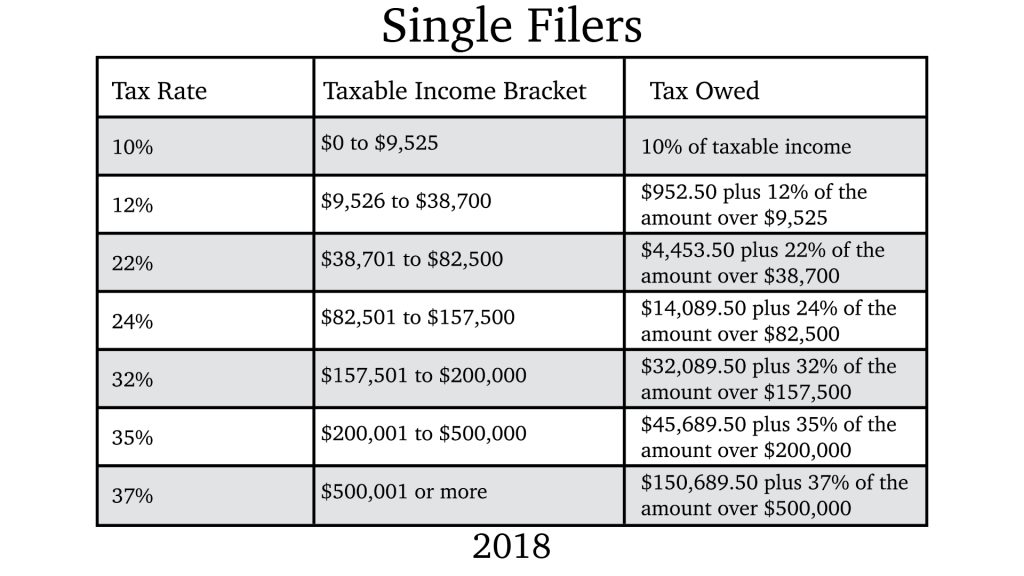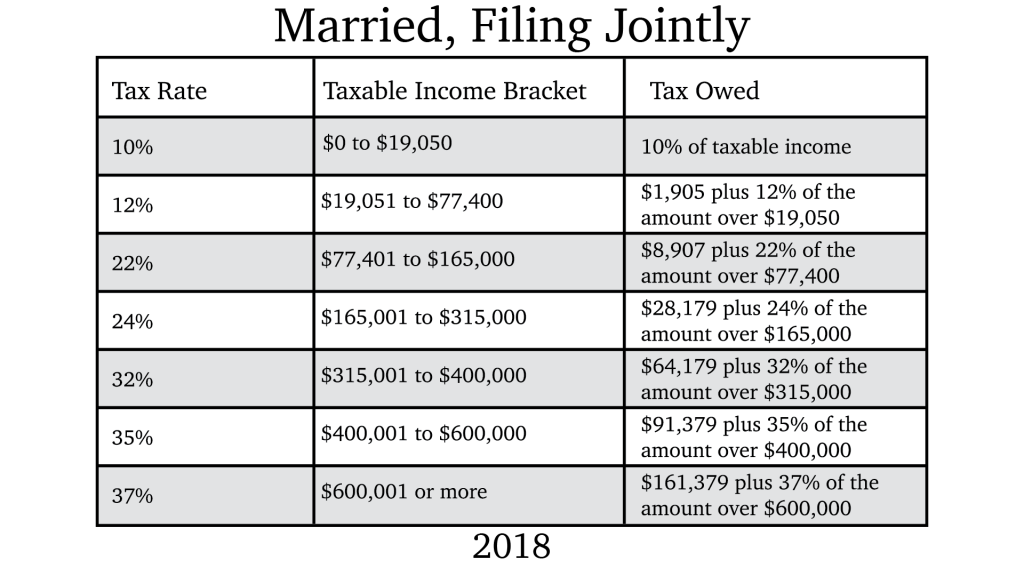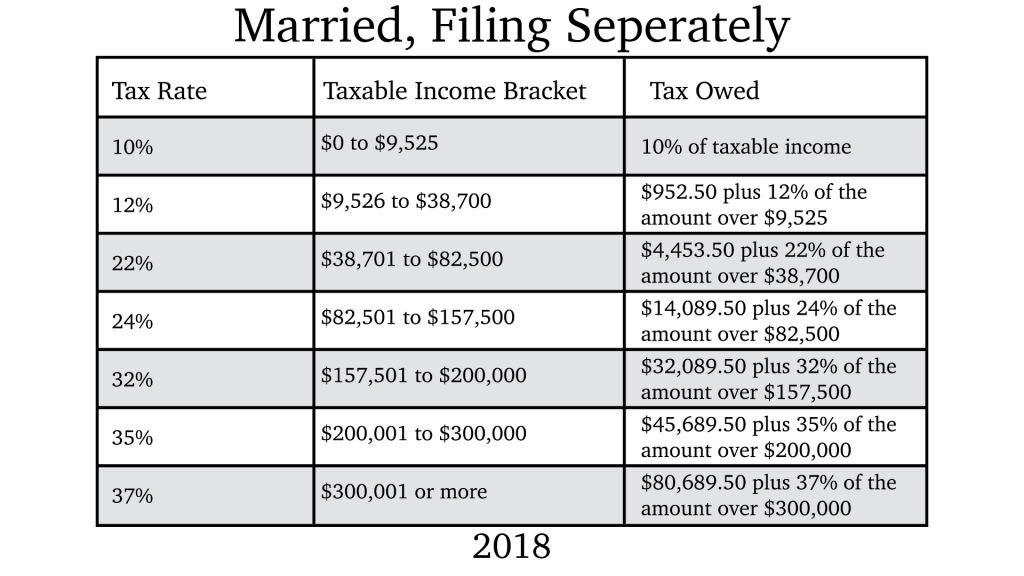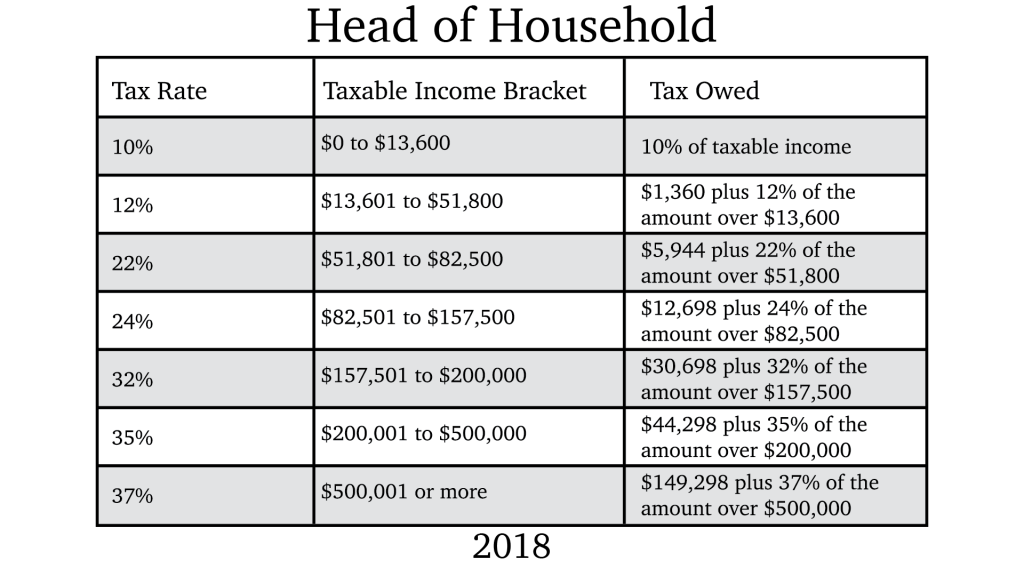2018 Tax Brackets
The US tax system is elusive. It’s complicated. It’s not strait forward.
Some say it’s over 70,000 pages long. Holy smokes!
How are we even supposed to keep up? For starters, I think it’s helpful to understand how the tax rates work and what percentage of your income goes towards your income taxes.
How is my tax bracket determined?
Here are a few things that may be helpful in upping your your understanding of how the tax rates work and, for your convenience, below are the tax rate charts for 2018. You can find the 2019 charts here.
The US has a progressive tax system. That means the more money you earn, the higher your tax rate.
If you are “in” a particular tax bracket, you do not necessarily pay that rate on all your income.
Your income is broken up into chunks. Each “chunk” of money pays the rate that it falls into.
Example of tax due on $100,000 income
For example, if you earn $100,000 and file jointly as a married couple, the first $19,050 of your income falls is into the 10% rate so you pay $1905 income tax on that “chunk”. Your income from $19,050 to $77,400 falls into the 12% tax bracket and about $7002 in tax on that portion of income. The income between $77,401 and $165,000 falls into the 22% tax bracket so you’d pay about $4,972 on the balance of your income. (reference the chart below for “Married, filing jointly”)
Your total tax paid is $1905 + $7002 + $4,972 = $13,879
So in our example you are “in” the 22% tax bracket but pay an “effective” tax rate of just under 14% ($13,879 is about 14% of your $100,000 income).
How can I reduce my taxes?
There are a lot of strategies you can pursue to reduce your taxes. Everyone’s situation is different. In reality determining your tax bracket is the easy part. The tax code starts to get real complicated when you need to start to determine what counts as income and what you can take as a deduction to lower your income. If you own a business your tax situation is even more complicated. always recommend that you consult a CPA/accountant to discuss how you can reduce your tax burden. And, it’s an even better idea to have a financial planner that can work with you and your tax professional to design the best strategy for you to pay the least amount of taxes.
2018 Tax Charts




